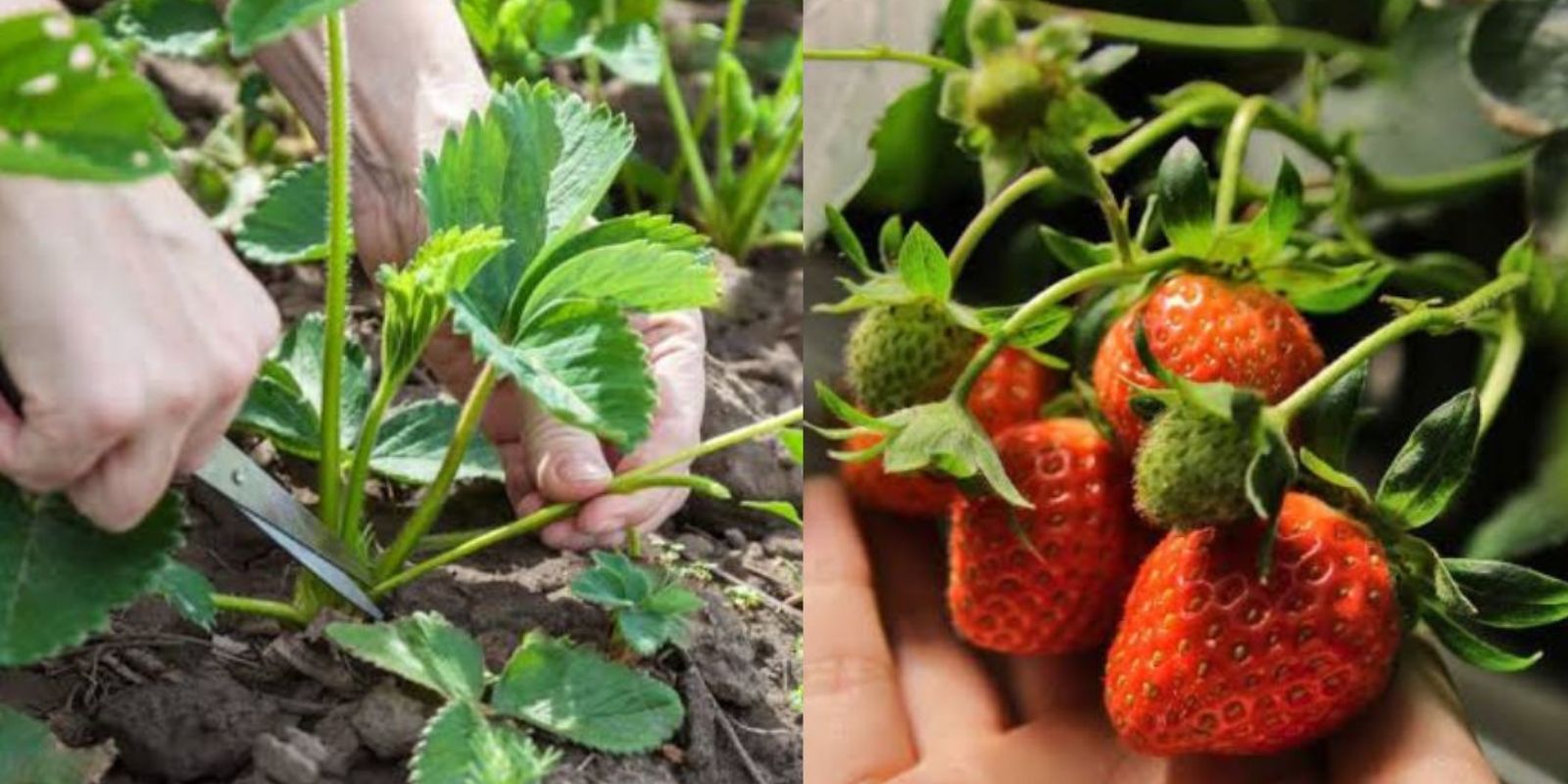Strawberries are a beloved addition to any garden, prized for their sweet and juicy fruits. However, growing healthy and productive strawberry plants requires proper care, including one of the most essential tasks—pruning. In this comprehensive guide, we’ll explore the importance of pruning strawberries, the best time to do it, and step-by-step instructions on how to prune like a pro. Whether you’re a beginner or an experienced gardener, mastering this skill will lead to a flourishing strawberry patch that delivers abundant harvests year after year.
Why Prune Strawberry Plants?
Pruning is crucial for maintaining the health and productivity of your strawberry plants. Here’s why:
- Encourages Growth: Removing old, damaged, or diseased leaves redirects the plant’s energy toward producing fresh growth and larger fruits.
- Prevents Diseases: Clearing out dead foliage reduces the risk of fungal infections and pests.
- Improves Air Circulation: Proper spacing and pruning promote better airflow, reducing humidity around the plants, which helps prevent mold and mildew.
- Increases Yield: Managing runners and thinning out weak plants allows the healthiest ones to focus on fruit production.
- Prepares for Next Season: Post-harvest pruning rejuvenates the plants, setting the stage for a successful growing season.
When to Prune Strawberry Plants
Timing is everything when it comes to pruning strawberries. Different types of strawberries require specific care:
- Summer-Bearing Varieties: Prune immediately after the fruiting season ends, typically in late summer or early fall. This allows plants to recover and develop strong roots before winter.
- Everbearing and Day-Neutral Varieties: Prune regularly throughout the growing season to manage runners and remove dead or diseased foliage.
- Before Frost: For all types, ensure pruning is done before the first frost to prevent damage to new growth.
How to Prune Strawberry Plants: Step-by-Step Instructions
1. Remove Old Leaves
- Inspect the plant for leaves that are yellow, brown, or showing signs of disease.
- Using sharp pruning shears, cut these leaves close to the base of the plant.
- Be careful not to damage the crown, which is the central part of the plant where new growth emerges.
2. Trim Excess Runners
- Runners (stolons) are the long, thin stems that produce new plants. While they help expand your strawberry patch, too many can drain energy from the main plant.
- Leave 3-4 runners per plant, selecting the strongest ones. Cut the rest to ensure the plant focuses on fruiting instead of vegetative growth.
3. Thin Out Crowded Plants
- Overcrowded plants compete for nutrients, water, and sunlight.
- Remove weaker or smaller plants, leaving a 12-18 inch gap between the remaining ones. This improves airflow and reduces the risk of disease.
4. Prune Summer-Bearing Plants
- After the fruiting season, trim the leaves of summer-bearing strawberries to about 4 inches (10 cm) above the crown.
- This promotes the growth of fresh, healthy foliage for the next season.
5. Avoid Over-Pruning
- While it’s essential to remove old foliage and excess runners, avoid cutting too much. Over-pruning can stress the plant and reduce its productivity.
6. Maintain Healthy Soil
- Regularly water the plants and apply a balanced fertilizer to support regrowth. Compost or organic fertilizer works best for strawberries.
7. Mulch for Protection
- Spread a layer of organic mulch, such as straw or compost, around the base of the plants. This helps retain moisture, suppress weeds, and insulate the roots during colder months.
8. Remove Damaged Fruits
- Check for any berries that are rotten, misshapen, or infected. Remove them promptly to prevent the spread of disease to healthy fruits.
9. Encourage Pollination
- To boost fruit production, plant flowers nearby that attract pollinators like bees. This ensures proper pollination and larger harvests.
Common Mistakes to Avoid
Even experienced gardeners can make errors when pruning strawberries. Here are some pitfalls to watch out for:
- Pruning Too Early: Wait until after the fruiting season ends to avoid interrupting the plant’s energy cycle.
- Cutting Too Much: Removing too many leaves or runners can weaken the plant.
- Ignoring Diseased Plants: Failing to remove infected foliage or fruits can lead to widespread problems.
- Skipping Mulch: Without mulch, plants are more vulnerable to weeds, temperature fluctuations, and moisture loss.
Additional Tips for Thriving Strawberry Plants
- Regular Maintenance: Inspect your plants weekly for signs of pests or diseases.
- Rotate Crops: Avoid planting strawberries in the same spot for more than three years to prevent soil-borne diseases.
- Use Raised Beds: Raised beds improve drainage and make it easier to control soil quality.
- Protect from Frost: In colder climates, cover your plants with straw or frost cloth to shield them from freezing temperatures.
Why Pruning Matters for Long-Term Success
Pruning may seem like a tedious task, but it’s an investment in the health and longevity of your strawberry plants. Regular pruning not only boosts fruit production but also ensures your garden remains pest-free and visually appealing. By following these simple steps and avoiding common mistakes, you’ll enjoy a bountiful strawberry harvest season after season.
Engage with Us!
Have you tried pruning your strawberries before? Share your tips, success stories, or questions in the comments below! Let’s grow the juiciest, most delicious strawberries together.
#StrawberryGardening #PruningTips #HealthyHarvest #GrowYourOwnFood #GardeningGoals #HomegrownGoodness

